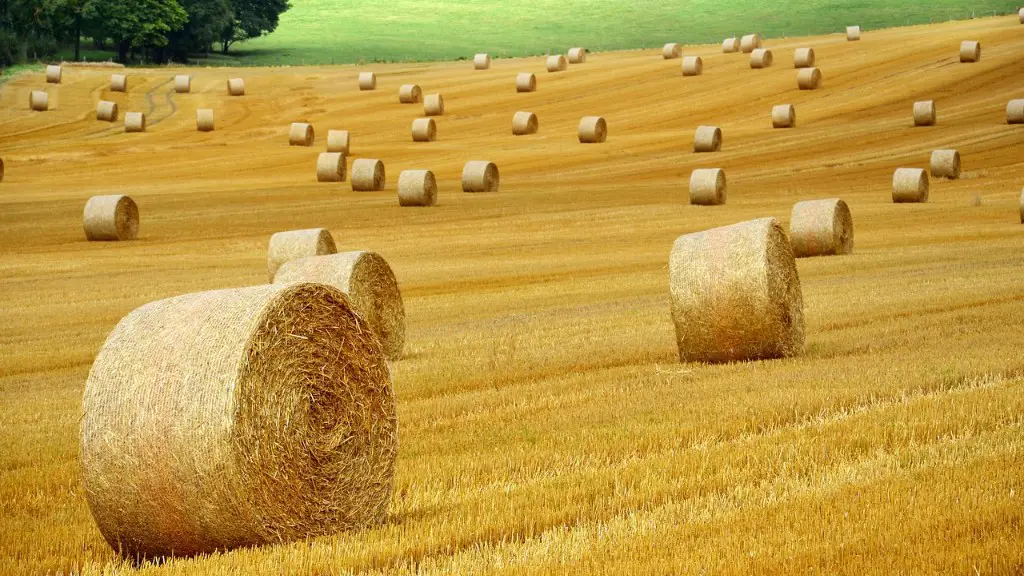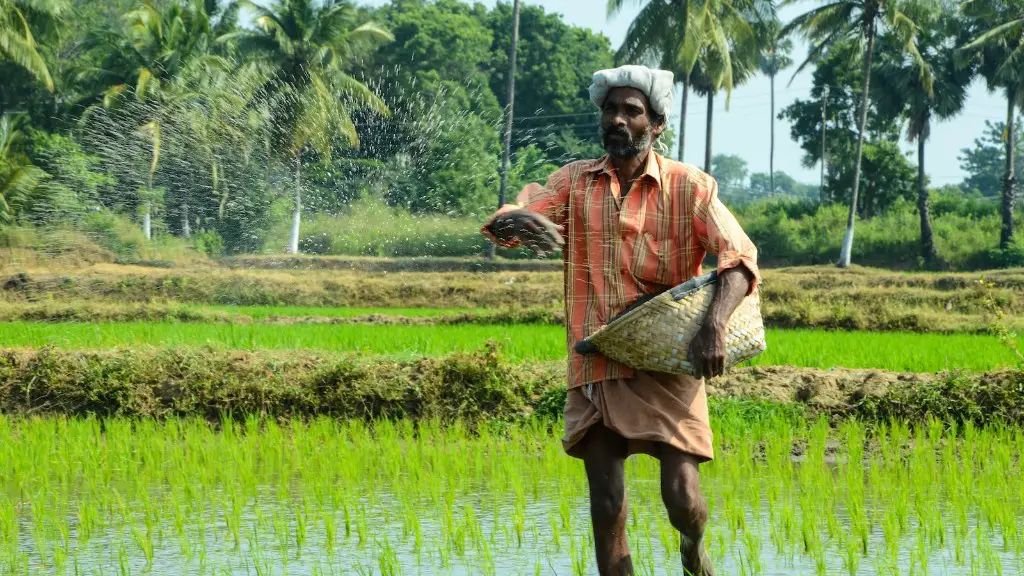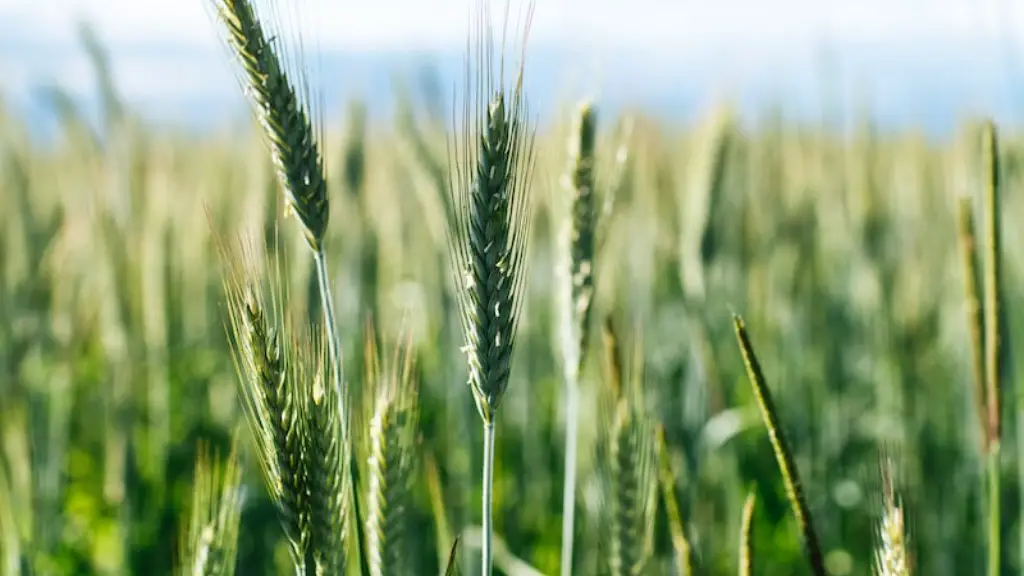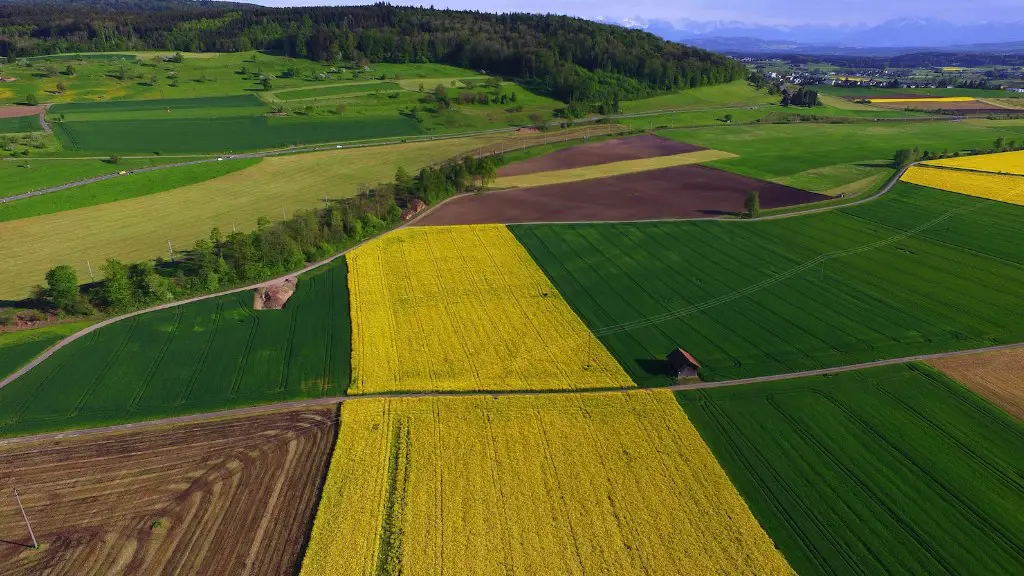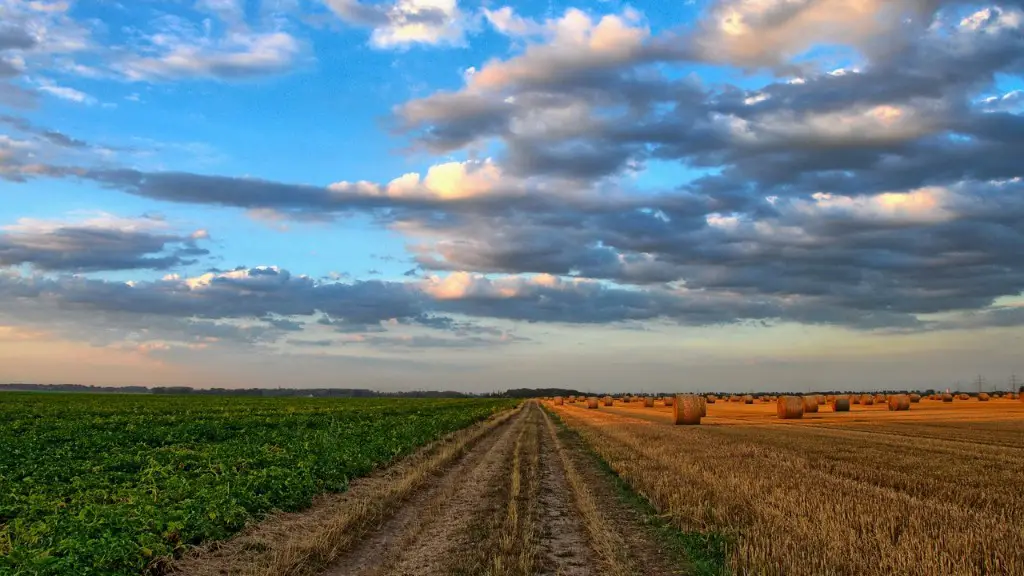Droughts have a significant impact on agriculture. By definition, droughts are long periods of time in which little to no rainfall occurs, which is often detrimental to crops. This affects the growth of food sources and techniques of production. Droughts can reduce crop yields and limit the amount of crops available for consumption. In some cases, droughts can also cause major damage to infrastructure, such as irrigation systems or irrigation channels.
The most immediate effect of drought on agricultural production is the lack of water that influences the germination and emergence of seeds. A lower rate of germination can be directly attributed to the lack of water. In addition, drought can cause wilting of plants and can lead to the death of crops in severe cases. This reduces not only the total amount of produce that can be harvested, but also the quality of the produce, as plants will struggle to reach an optimal size.
In order to protect crops from drought, some farmers resort to switching to drought tolerant or resistant crops, or entirely different agricultural sectors such as livestock or aquaculture. But even in areas where crops are designed to withstand drought, reduced production is still major. Livestock farmers may have to use alternate sources of water such as harvested rain water or even trucking in water from other areas.
Another way droughts can affect agriculture is economic. This is due to the value that the crops no longer contribute to the market; less food means less money. This can impact local rural communities and those who rely on tourism, as these areas are deprived of revenue. Furthermore, farmers take on a large financial risk as they invest in inputs such as seeds and fertilizer in hope they can yield a good harvest and a return on investment at the end of the season. With a drought comes the lack of assurance of a good return.
Drought also impacts ecosystems and their services; production from forestry, fishing, and increasingly from agroforestry may be affected due to a reduction in water availability. Drought does not only disrupt agricultural production; livestock may be unable to find the necessary nutrition and will become weak or starve in some cases. This can lead to reduced exports and an increase in production costs.
Infrastructure Damage
The combination of drought and heat can cause damage to infrastructure, such as roads and bridges. When water evaporates, the ground underneath can become dry and hard and can cause the road to crack. In addition, the combination of the heat and sun can damage road surfaces and the protective coatings, the builds-up of which can cause road surfaces to degrade over time.
Droughts can lead to water shortage, which forces governments to reduce their water supply and affects drought-prone areas around the world. This can lead to irrigation systems becoming inefficient and potentially malfunction, as they are not designed to operate in low water supplied areas. Furthermore, the lack of water may cause over-stressing of existing water resources necessary to sustain agriculture, leading to the depletion of soil fertility and adverse effects on the livelihoods of rural communities.
Reduced Water Availability
Most of the areas affected by drought are already water-stressed, having inadequate water resources to sustain the population. During droughts, the availability of water for agricultural activities is significantly reduced, which affects crop production and yields. Droughts can also cause surface water such as rivers, streams and lakes to dry up entirely, reducing the availability of water for crop production.
In dry climates, the evaporation of water from the surface can be much higher than usual and this leads to an increased risk of soil erosion. This can be a major problem in arid and semi-arid environments, as these areas are prone to wind erosion in the absence of vegetation. Additionally, the lack of water can reduce the effectiveness of soil-protection measures, such as re-vegetation.
In addition to reduced water availability, droughts can also cause an increase in the salinity of water sources. This is due to salt ions being retained in the soil as more water evaporates in drought conditions. As a result, crops will become more susceptible to wilting due to increased salt levels in the soil, and this can lead to reduced crop yields and quality.
Loss of biomass
Drought conditions can cause the death of crops and lead to a significant loss of biomass. Losses of fertilizer due to leaching and evaporation, reduced soil fertility, and smaller yields all combine to cause an overall loss of production, which can have a long-lasting effect on the ecosystem. This can also be a major problem for farmers and rural communities, particularly in drought-prone areas, as the lack of biomass can lead to lower nutrient levels and fewer crops.
In addition, drought can reduce the efficiency of pest control, which can have a large impact on crop yields. The lack of water can reduce the ability of crops to remove weeds and disease, leading to crop losses and reduced yields. This means that farmers may have to rely on more pesticides or herbicides to maintain their crops, which can have a negative impact on the environment.
The lack of rainfall and water can also lead to an increase in the number of pests and predators, which can cause further damage to crops. This can reduce the amount of product that farmers are able to harvest, as well as cause damage to the quality of product. This can have a large financial impact on farmers, as well as the communities in which they live.
Economic Loss
Finally, economic losses are a major factor of the impact of droughts on agriculture. As droughts reduce the yields of crops and the quality of the produce, this can have a negative effect on the income of farmers and other members of the agricultural sector. This decreases the amount of money that goes into the economy and produces negative effects for the local community or even beyond.
Drought can also lead to a decrease in the amount of work available and an increase in the unemployment rate. This further reduces the amount of money that can be made from agriculture and causes an increase in poverty. In addition, food insecurity can become a problem as the inability to produce food, or buy it, becomes more common.
Drought can also affect the socio-economic status of rural communities or even an entire country. In areas where agriculture is the primary source of income, a decrease in crop yields directly translates to a decrease in income. This is especially relevant in developing countries where much of the population is subsistence farmers, who rely on the products of their land to survive.
Climate Change
Droughts are often caused by changes in weather patterns due to climate change. Climate change occasionally disrupts the balance between precipitation and evaporation, leading to irregular weather patterns and prolonged periods of drought. This then leads to a decrease in crop yields, as well as a change in the types of crops that can be grown. It can also cause an increased vulnerability to pests and diseases, leading to further agricultural losses.
In addition, climate change can create extreme weather patterns such as floods, high winds and hail, further disrupting crop yields and causing major damage to crops. Such extreme weather can cause large amounts of damage in a short amount of time, which can make it even more difficult for farmers to recover from a drought.
Furthermore, changes in temperature and precipitation can reduce the quality of crops, as lower temperatures and high moisture can reduce the nutrition of crops. This can lead to lower nutrition levels in the foods we consume and fewer nutrients available for crops to reach optimal sizes.
Finally, climate change can also cause soil degradation due to increased soil erosion. This can lead to a decrease in the amount of nutrients in soils and make it more difficult for crops to grow. This further impacts the production and yields of crops, as well as the quality of the soil, which can have a detrimental effect on farming communities.
